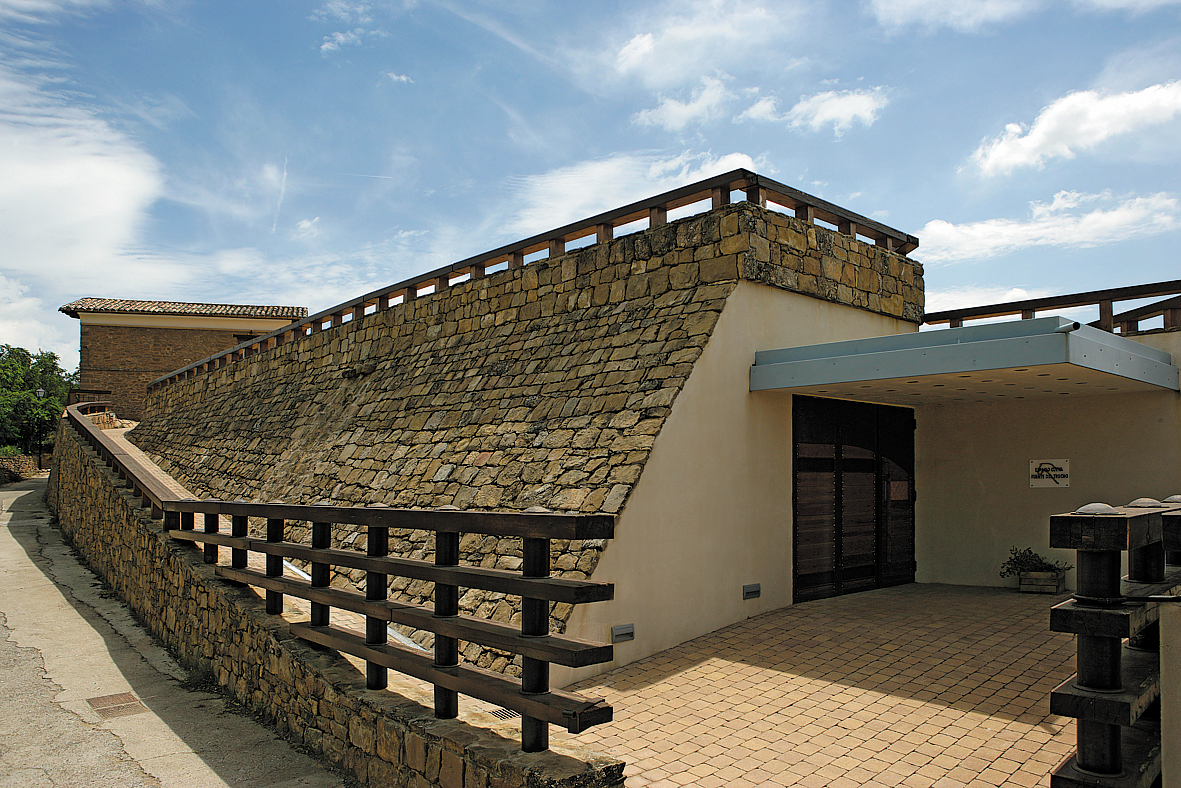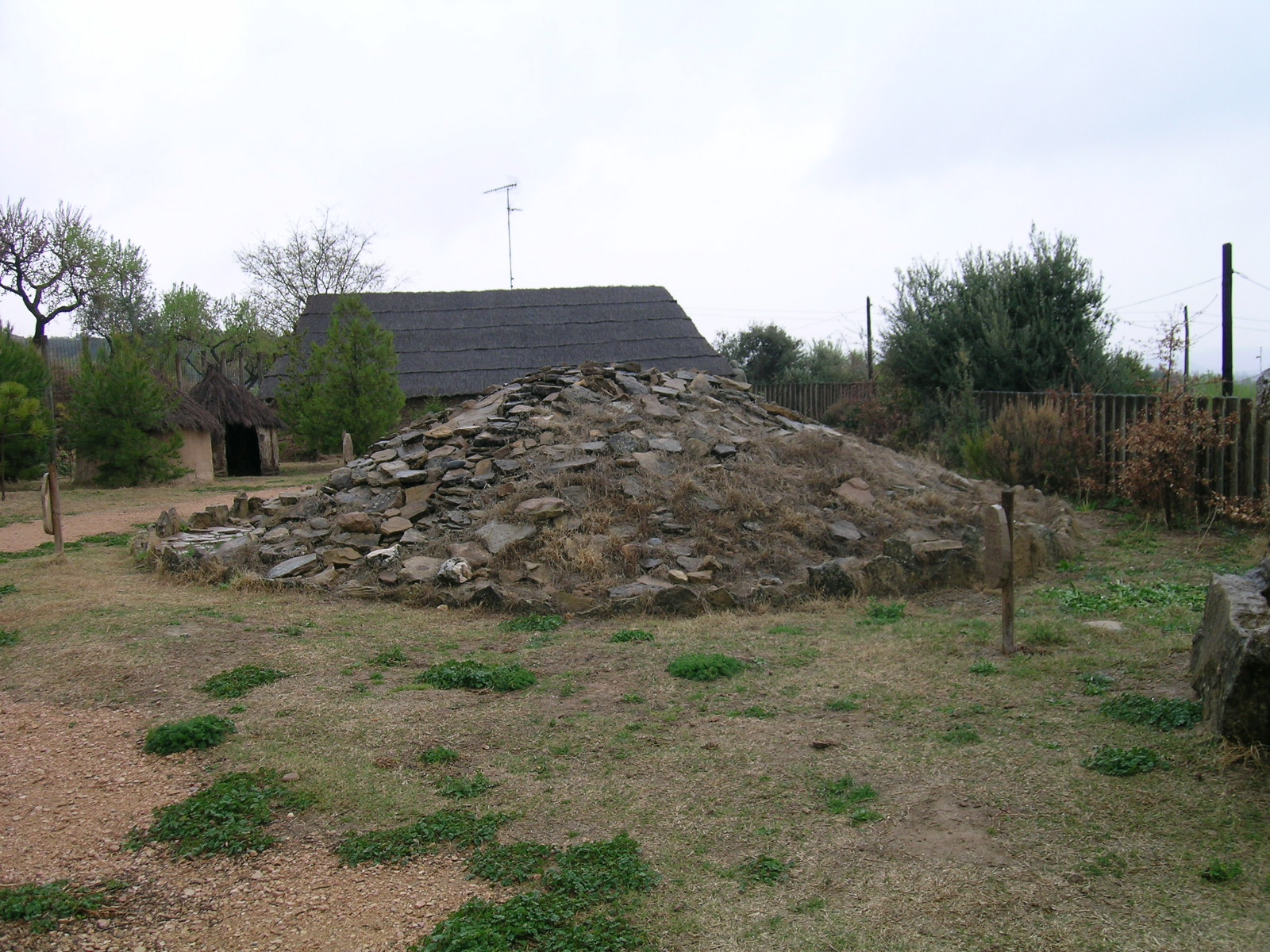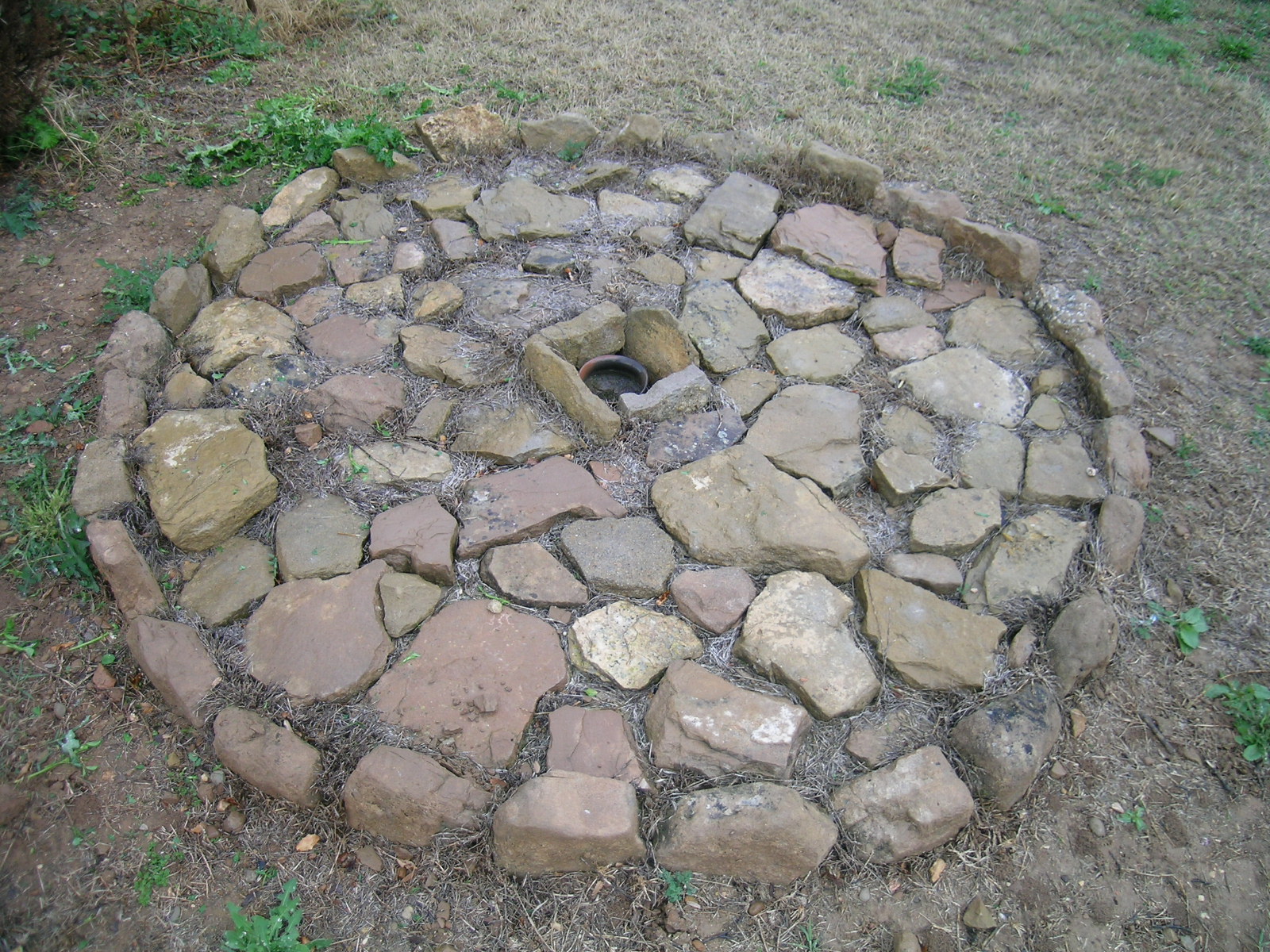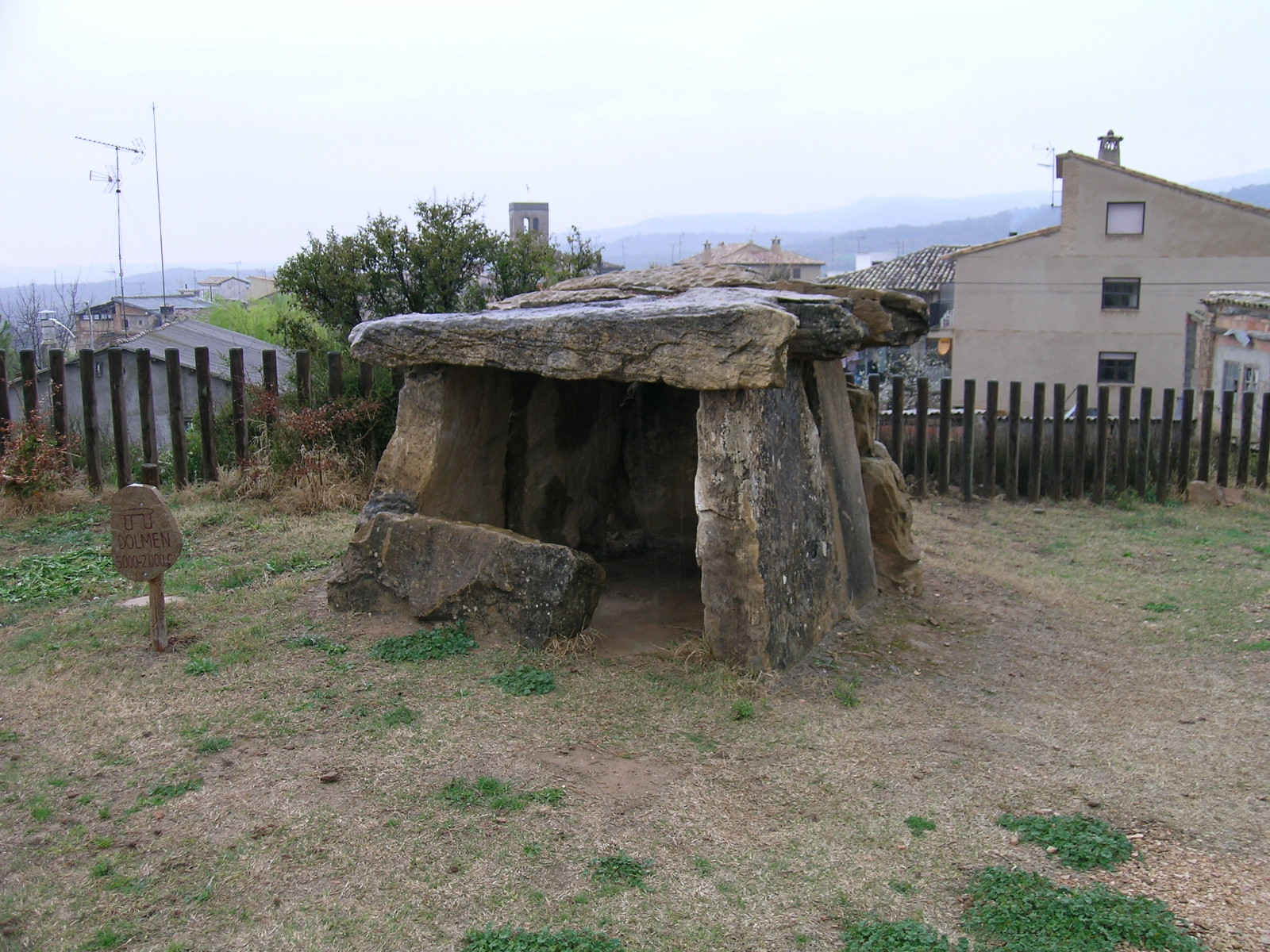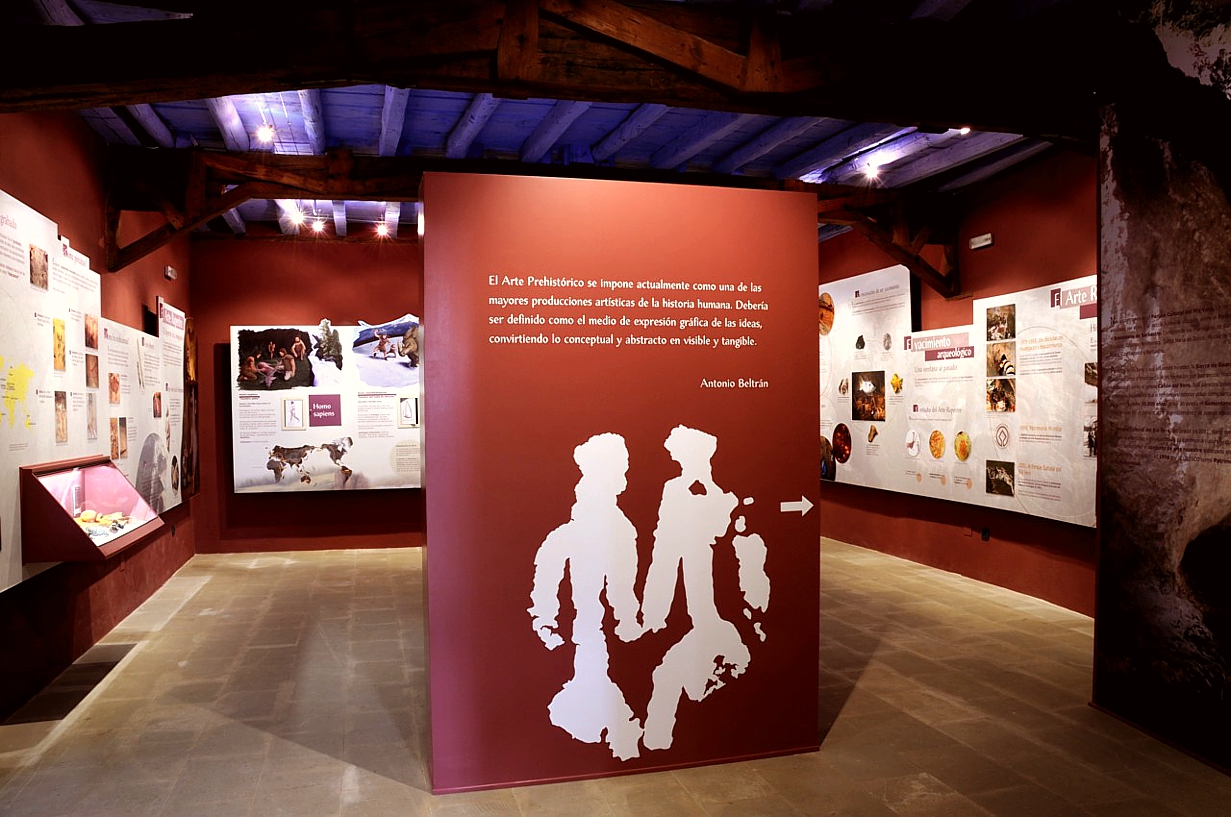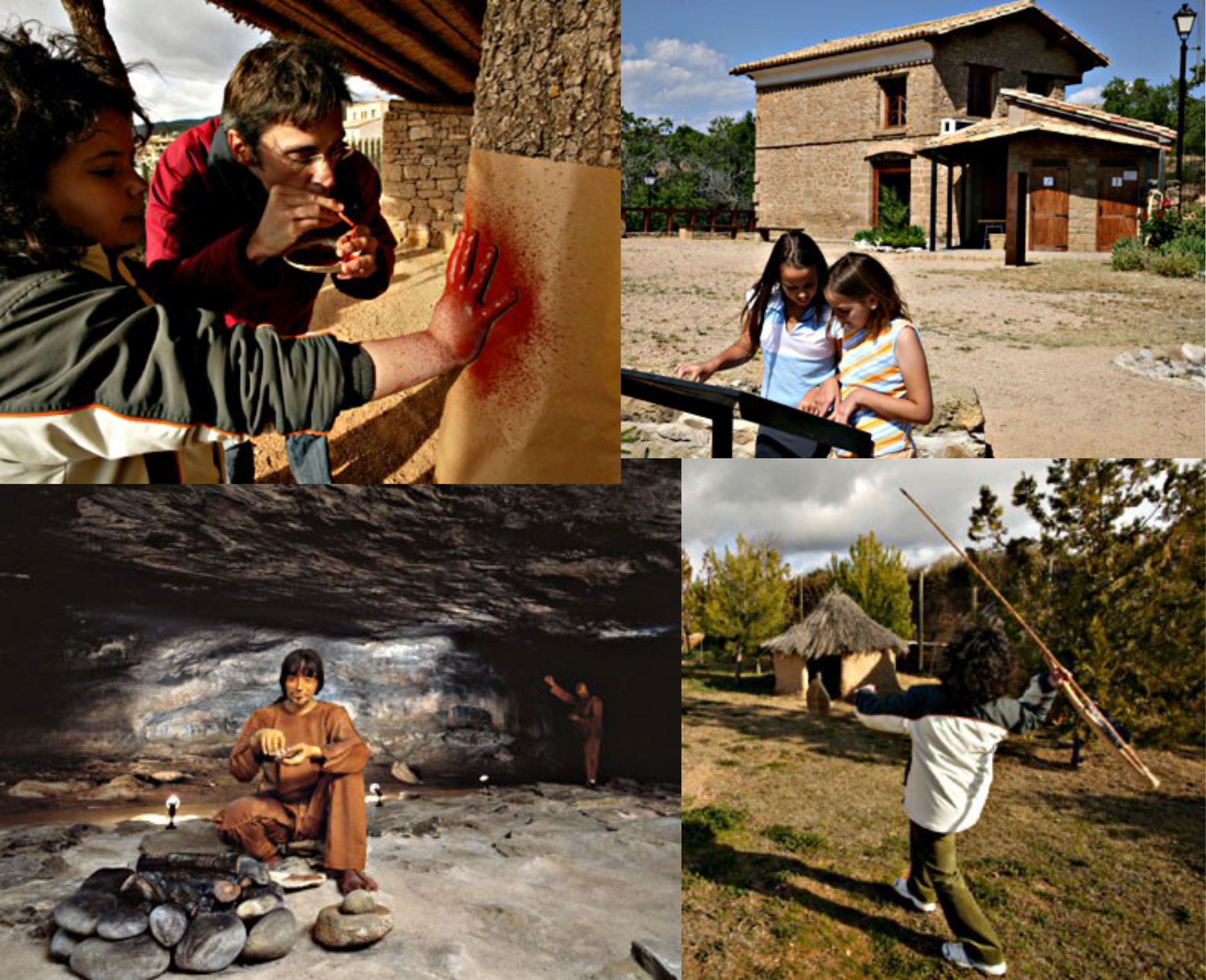General description of the destination: Rio Vero Cultural Park offers the unique opportunity to see, in a single small area, all the types of art produced by humans during more than 18,000 years. In addition to the sites open to visitors, the Park has a modern Visitors’ Centre in the town of Colungo. This centre contains a replica of the main group of paintings in Cueva de la Fuentre del Trucho. COLUNGO: Colungo Rock Art Visitors’ Centre: replicas, illustrations audiovisual presentations, interactive panels and many activities (including workshops and guided visits). Educational programmes for schools and organisation of events such as archery competitions. From here it is possible to visit the rock-shelters in the Park, accompanied by a qualified guide. Arpán Rock-Shelter: It is located in the ravine of the same name, a tributary of the Vero, near Cueva de la Fuente del Trucho. It is an area of gentle relief with limestone and conglomerates, and Mediterranean woodland. The small rock-shelter contains Levantine Art (deer and human figures) and Schematic signs, all in ochre-red. Some engravings can be seen near the paintings. Four stags can be identified (one of which is complete and well-conserved) and remains of another three, over a line of dots. There are also remains of several archers, another animal and a scene of gathering food. Mallata Rock-Shelters: In the ravine of the Rio Vero, in impressive limestone cliffs, there are tens of rock-shelters, some of which contain Schematic rock art. There are three scenes of humans hunting deer, anthropomorphs –some wearing hats, several animals (wild boar, horned animal, horses) and signs (branching, lines, semi-circles, crosses, stars and combs). Cueva de la Fuente del Trucho: In the Villacantil Ravine, it contains the only Palaeolithic art discovered in Aragon, with a Middle Palaeolithic and Upper Palaeolithic occupation in the cave entrance. The outer area has engravings of a bear and a feline, while the inner area contains paintings in black and red. Among as many as 140 figures, there are horses, an ibex, and hands (in both red and black). There are also signs and groups of dots forming long lines. ALQUÉZAR: Chimiachas Rock-Shelters: These are in Chimiachas Ravine, a tributary of the Rio Vero. It is a wild place, with pine and holm oaks. There are several rock-shelters with rock art. The main one exhibits a spectacular Levantine figure of a motionless stag. It is an ochre-red painting on the wall, with a very marked outline and red interior fill, and very fine antlers. Quizáns Rock-Shelters: On the left bank of the Rio Vero, at the top of Las Clusas rock outcrops. Two of the shelters have Schematic art. Animal figures can be identified (deer and ibex) and a curious anthropomorph that uses natural features of the rock to create the figure. BÁRCABO: Barfaluy Rock-Shelters: On the left side of La Choca Ravine, a tributary of the Rio Vero, opposite the Mallata site. It is an area of deep limestone canyons with numerous small caves. Mediterranean scrub vegetation and holm oaks predominate in the scenery. Three shelters have Schematic rock art. The figures in red and black include anthropomorphs, figures with claw-like hands, figures pulling a sledge, several goats and other animals, a possible large-eyed idol, finger-marks and angular and zigzag signs.
Museographic resources description: The Visitors’ Centre in Colungo is devoted to the rock art and prehistory of Rio Vero Cultural Park. It is in an original stone building and park. The museum holds the archaeological exhibition and reception. The Cueva Fuente del Trucho Zone is a large area about that cave, with a replica of its main panel, with Upper Palaeolithic paintings of horses, stencilled hands, and compositions of dots. There is an audiovisual presentation.The archaeological park outside has different structures, like dolmens and huts, with activity areas and open-air rest areas. The Park also has other visitors’ centres devoted to other topics of interest. The Rio Vero Interpretation Centre (Castillazuelo), Legends and Traditions (Adahuesca), Somontano and Wine (both in Barbastro), Casa Fabián Ethnographic Museum (Alquézar), Guadamacil Museum (Asque), Alquézar Museum-Collegiate, Diocese Museum and Ice Pit (both in Barbastro) and the Oil Wheel (Buera).

